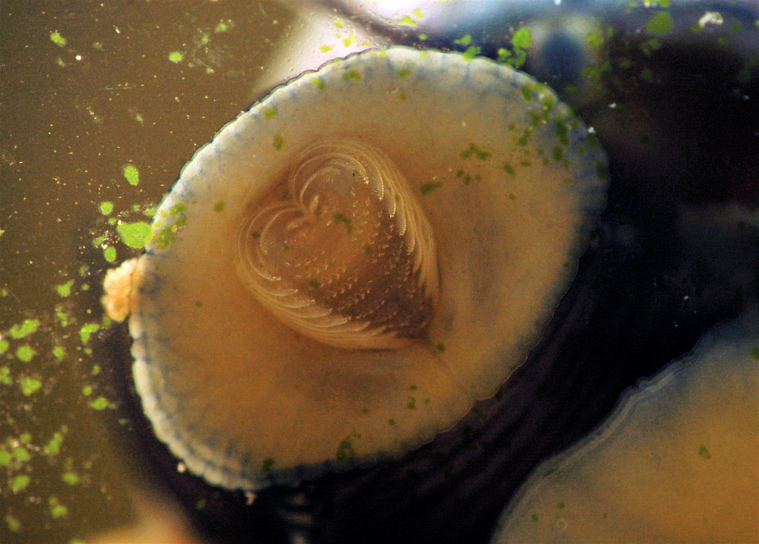Adaptation
To withstand hardships and to obtain necessities to survive, Physella gyrina, like most living organisms, has gone through numerous adaptations to ensure survival. One of the main things organisms have to worry about is defending off predators. Although they are small creatures, Physella gyrina holds its own when approcahed by a hungry predator. By detecting predators through chemical cues as well as crawling to safe habitats when a predator is near. One distinct feature of the Physella gyrina shell is that is has differing plasticity depending on the predator environment. When these snails are around predators capable of crushing their outer shell, Physella gyrina's shell becomes thicker. In environments where the main predators of Physella gyrina (crayfish) are numerous, the outer shell narrows so that it is more difficult to extract the snail's body from its shell (Freshwater Gastropods of North America 2006).
When located in regions of water of flooding or pollution, Physella gyrina
are capable of making use of surface air if
the water they are in contains a low oxygen content (Harold
and Guralnick 2010).
Structurally, Physella gyrina obtain a mantle skirt.
The mantle skirt has has two lobes that can be found on the left
and right sides of the body. To increase the exchange of oxygen
and carbon dioxide gases, the mantle skirt allows Physella
gyrina to be submerged under water for extended periods of
time; replacing the function of gills in other aquatic organisms
(Apple Snails 2007).

Another distinct feature of Physella gyrina is the
modified "tongue," or also known as the radula. The radula in
Physella gyrina
is capable of ripping and grinding food so that they may obtain
nutrients. Composing this grinding feature are numerous chitinous teeth that break down food particles (The
Living World of Molluscs 2011). Pictured to the left is a radula
of a snail.
Learn more about Reproduction next!
Go home